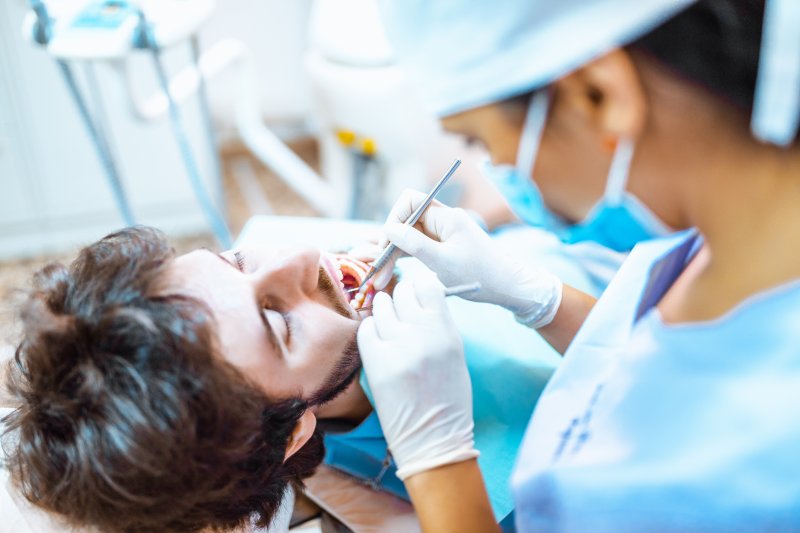
Did you know a whopping 92% of U.S. adults between the ages of 20 and 64 have had at least one cavity? Plus, the staggering statistics don’t stop there. According to the National Institute of Dental and Craniofacial Research, 42% of children between 2 and 11 have tooth decay in their primary teeth and 26% of adults have untreated tooth decay. With figures like these, it is no wonder why fillings are one of the most common dental treatments! If you have found yourself wondering how your dentist spots cavities at your routine visit, then keep reading.
#1. Visual Inspection
According to the experts at the American Dental Association, a cavity can take anywhere from a few months to a few years to fully develop. In the early stages, tooth decay may not be detectable to the untrained eye. However, in the later phases, the damage is often visible and causes your tooth to take on a gray, brown, or black appearance. To prevent this from happening to you, it is crucial to prioritize your bi-yearly visits. That way, your teeth are routinely undergoing a dental examination and cleaning that can play a crucial role in early detection and proper prevention.
#2. By Touch
While many are aware of the unsightly, visible effects cavities have on your teeth, few know that significant tooth decay can change the texture as well. Therefore, your dentist may use an instrument called an explorer to feel for any soft or sticky spots on your teeth. However, many dental teams have moved away from this method of detection since it can damage the surface of your enamel or push the bacteria deeper into the grooves of your teeth. Instead, they will use advanced technology to check for early signs of tooth decay.
#3. Taking X-Rays
To effectively identify cavities in between your teeth, dentists use X-rays. This is crucial because tooth decay between two teeth is one of the most common types of cavities among U.S. adults today. Therefore, your dental team will likely conduct X-rays before you sit down in the treatment chair to give your dentist some insight into what is going on beneath the surface.
Armed with the above three tactics, dentists can properly detect cavities in patients of all ages. This is crucial since early intervention and treatment can preserve your oral health, stop the harmful bacteria from spreading, and keep your teeth and gums in tip-top shape!
About the Author
After graduating Magna Cum Laude from the University of Texas in Arlington with her bachelor’s degree, Dr. Tammy Ton attended Marquette University School of Dentistry for her Doctor of Dental Surgery. Today, she uses her extensive experience, advanced training, and genuine care for her patients to provide high-quality dentistry at every appointment! If you would like to speak with Dr. Ton about scheduling your bi-yearly visit or treating an existing cavity, visit her website or give her a call at 972-698-5988.
